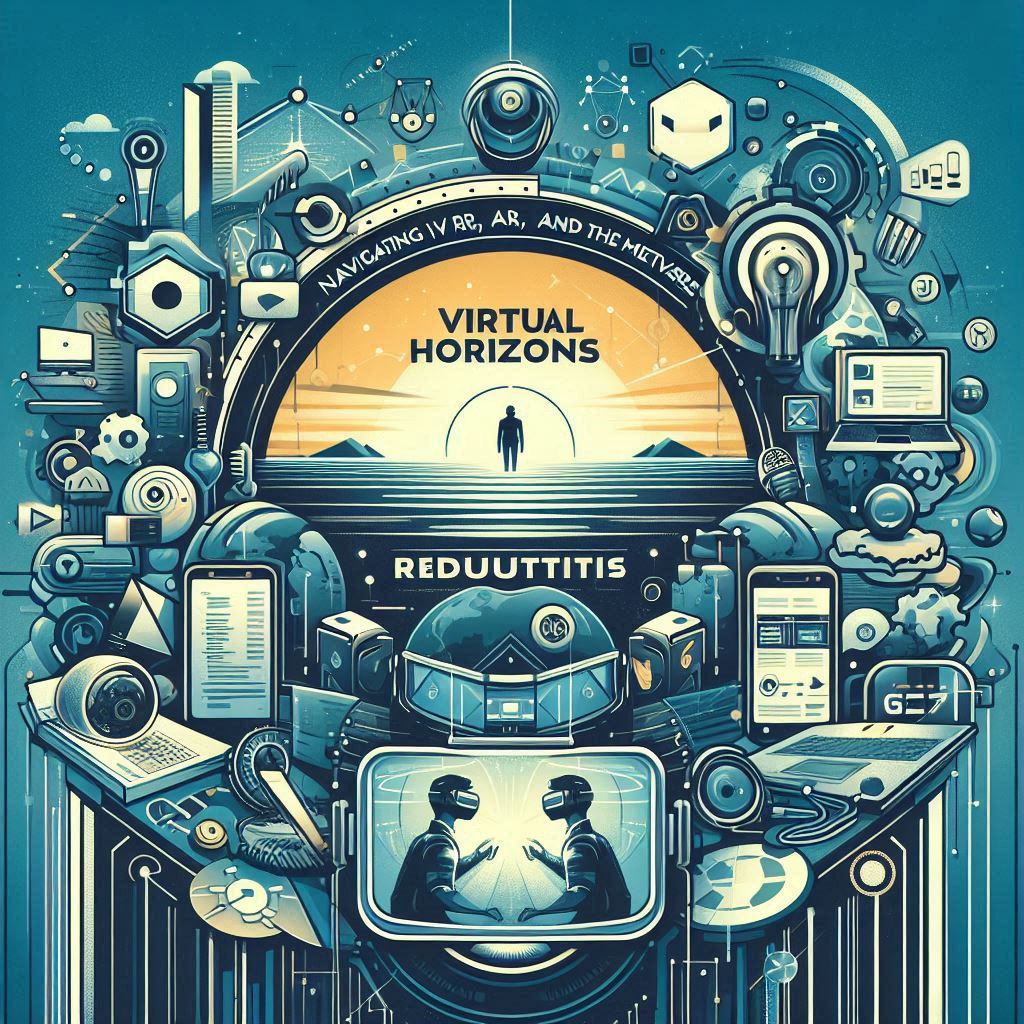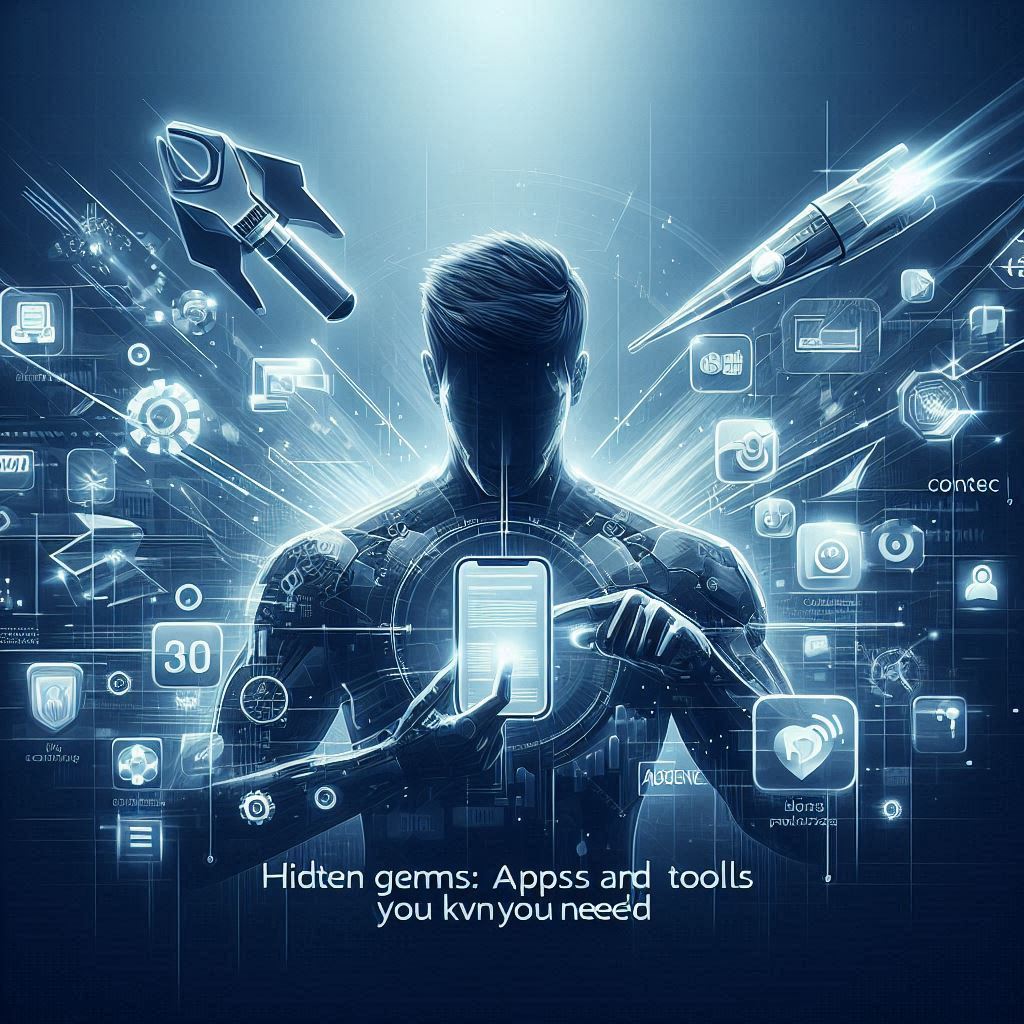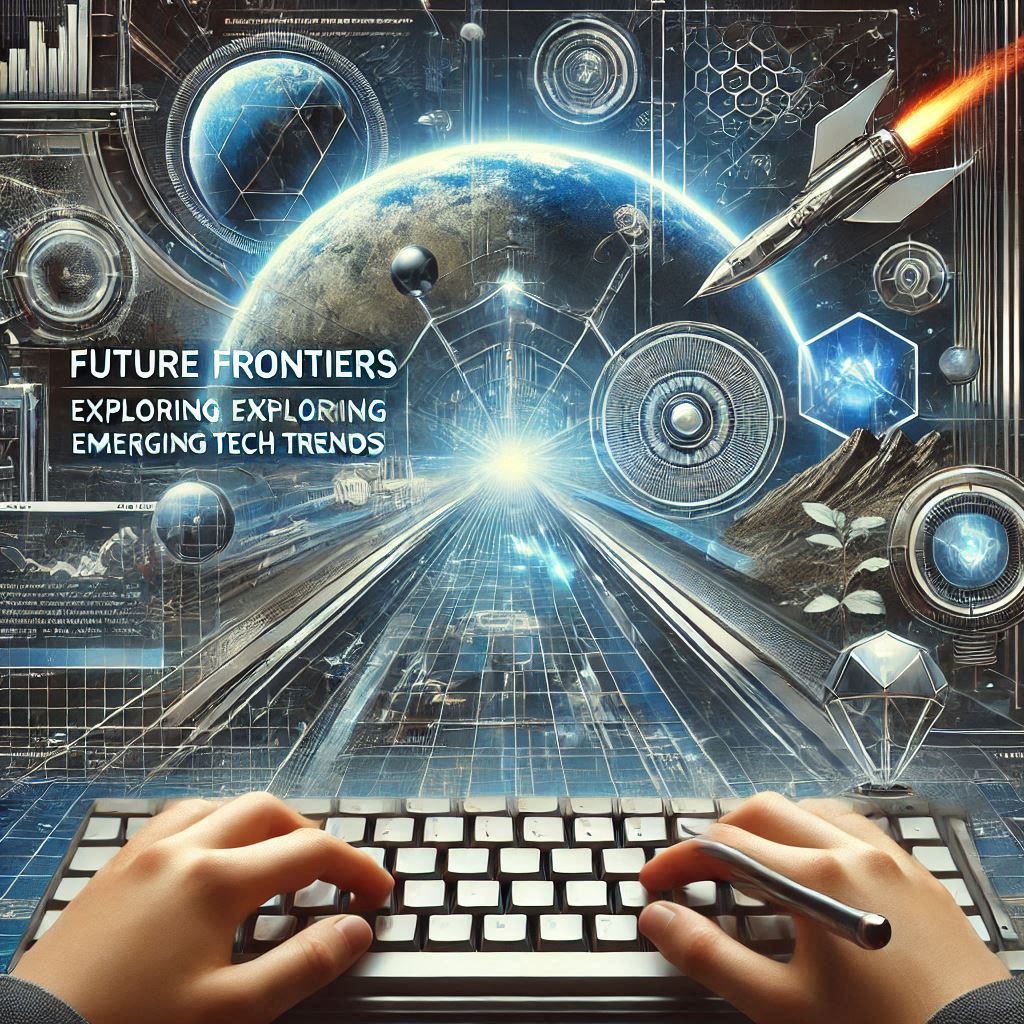The world of technology is rapidly expanding into new dimensions, with Virtual Reality (VR), Augmented Reality (AR), and the Metaverse leading the way. These immersive technologies are transforming the way we interact with digital content, communicate with others, and experience entertainment, education, and business. As we move towards a more connected and digital future, these innovations are reshaping industries and offering new possibilities for exploration, creativity, and connection. Let’s explore these technologies and their potential to change the world as we know it.
1. Virtual Reality (VR): Immersing in New Worlds
Virtual Reality (VR) is a technology that creates fully immersive, computer-generated environments. By wearing VR headsets, users can experience a completely virtual world that feels real, whether they are exploring a fantastical landscape, engaging in a video game, or participating in training simulations. VR has found applications in entertainment, education, healthcare, and even therapy, offering an entirely new way to experience content.
Why it matters: VR allows users to step into experiences that were once unimaginable, providing a high level of immersion and interactivity. Whether for entertainment or education, VR offers a transformative way to engage with digital content.
Key Applications:
- Gaming: Virtual reality is revolutionizing the gaming experience, offering players the opportunity to step inside their favorite games and explore new worlds in a completely immersive way.
- Healthcare: VR is being used for pain management, therapy, and medical training, providing patients and medical professionals with interactive simulations that improve treatment outcomes and education.
- Education: VR enables students to experience history, science, and other subjects in immersive virtual environments, making learning more engaging and interactive.
- Training and Simulation: Industries such as aviation, military, and manufacturing use VR for simulation-based training, allowing employees to practice complex tasks in a safe virtual environment.
2. Augmented Reality (AR): Enhancing the Real World
While Virtual Reality immerses users in entirely digital worlds, Augmented Reality (AR) overlays digital content onto the real world. AR enhances a user’s perception of their environment by superimposing virtual elements such as graphics, sounds, or videos onto the physical world in real-time. Popularized by apps like Pokémon Go and Apple’s ARKit, AR is becoming an essential tool in retail, navigation, entertainment, and marketing.
Why it matters: AR blends the physical and digital worlds, creating richer, more interactive experiences that enhance real-life situations. Whether for shopping, learning, or entertainment, AR allows users to interact with digital content in a more dynamic and engaging way.
Key Applications:
- Retail: AR allows customers to try on clothes virtually or visualize how furniture will look in their homes before purchasing, enhancing the shopping experience and reducing returns.
- Navigation: AR enhances navigation by overlaying directions and points of interest on real-world views, making it easier to find your way in unfamiliar places.
- Healthcare: Surgeons use AR to overlay critical information, such as patient data, on their field of view during surgeries, improving precision and outcomes.
- Entertainment: AR is used in games, interactive storytelling, and themed attractions, providing a more immersive and engaging experience for users.
3. The Metaverse: A New Digital Frontier
The Metaverse is an interconnected virtual universe, combining elements of VR, AR, and other immersive technologies into one cohesive digital space. It’s envisioned as a space where people can work, socialize, play, and create in a virtual world that mimics the physical one, but with far greater possibilities. Think of it as a digital twin of our world, where you can own virtual property, attend virtual concerts, buy digital assets, or collaborate in virtual workplaces. Companies like Meta (formerly Facebook), Microsoft, and Epic Games are investing heavily in the Metaverse, shaping its development and potential.
Why it matters: The Metaverse represents a new frontier in how we engage with digital spaces. It promises to create new economic opportunities, redefine social interaction, and offer immersive experiences that will blend the virtual and physical worlds in unprecedented ways.
Key Applications:
- Social Interaction: Users can create avatars and interact with others in a fully virtual environment. Virtual gatherings, events, and meetups can take place in the Metaverse, offering new forms of social connection.
- Business and Work: The Metaverse is also transforming the way we work. Virtual offices and collaborative workspaces allow people to work together in a shared virtual environment, regardless of their physical location.
- Entertainment: The Metaverse is expected to host concerts, live events, and interactive entertainment, where users can attend virtual performances or experience media in ways not possible in the physical world.
- E-commerce: Virtual marketplaces allow users to buy and sell digital goods, from fashion and accessories for avatars to virtual land and NFTs (non-fungible tokens). These digital assets have created new industries and economies within the Metaverse.
4. The Convergence of VR, AR, and the Metaverse
The true power of these immersive technologies lies in their convergence. As VR, AR, and the Metaverse continue to evolve, they are becoming more interconnected, creating a seamless blend of digital and physical experiences. For example, VR can be used to experience virtual worlds, AR can enhance those experiences with real-time data, and the Metaverse can act as the overarching platform where these technologies come together.
Why it matters: The convergence of VR, AR, and the Metaverse will unlock new levels of interactivity and creativity, leading to innovations that blend the real and virtual worlds in dynamic ways. This will revolutionize industries, create new job opportunities, and transform how we socialize, work, and play.
Key Examples:
- Virtual Conferences and Meetings: The Metaverse will host VR-based meetings and conferences, with AR tools to enhance presentations, and VR environments where participants can interact and collaborate.
- Gaming and Social Spaces: Games like Fortnite are already blurring the line between AR, VR, and the Metaverse by hosting virtual events and offering in-game experiences that are also tied to the broader Metaverse.
- E-commerce and Virtual Goods: The Metaverse offers a platform for virtual shopping experiences, where AR can help you try products before buying them, and VR allows you to experience products in virtual environments.
5. The Future of Immersive Technologies
The potential of VR, AR, and the Metaverse is immense, but we are still in the early stages of their development. As technology continues to improve, we can expect more realistic, interactive, and accessible experiences. Innovations in hardware, such as lighter, more affordable VR headsets and AR glasses, as well as faster, more immersive internet connections (e.g., 5G), will make these technologies more accessible to a broader audience.
Why it matters: As immersive technologies continue to advance, they will play an even bigger role in everyday life. We will likely see further integration of VR, AR, and the Metaverse into work, entertainment, education, and social interaction, fundamentally changing the way we experience the world.
Key Trends to Watch:
- Advancements in AI and Machine Learning: These technologies will enhance VR and AR experiences by enabling more intelligent and responsive virtual environments.
- Mixed Reality Devices: New hardware, such as AR glasses and advanced VR headsets, will blur the lines between the physical and digital worlds, making these technologies more immersive and practical for everyday use.
- Decentralization in the Metaverse: Blockchain technology and NFTs could offer users more control over their digital assets and interactions within the Metaverse, creating a more open and user-driven digital economy.
Conclusion
The world of VR, AR, and the Metaverse is expanding rapidly, offering exciting new possibilities for how we work, play, and connect with one another. These technologies are not just shaping the future of entertainment and social media but are revolutionizing education, healthcare, business, and beyond. As we continue to explore these virtual horizons, we can expect even greater innovations that will redefine our digital experiences and open new doors to creativity, collaboration, and connection.



